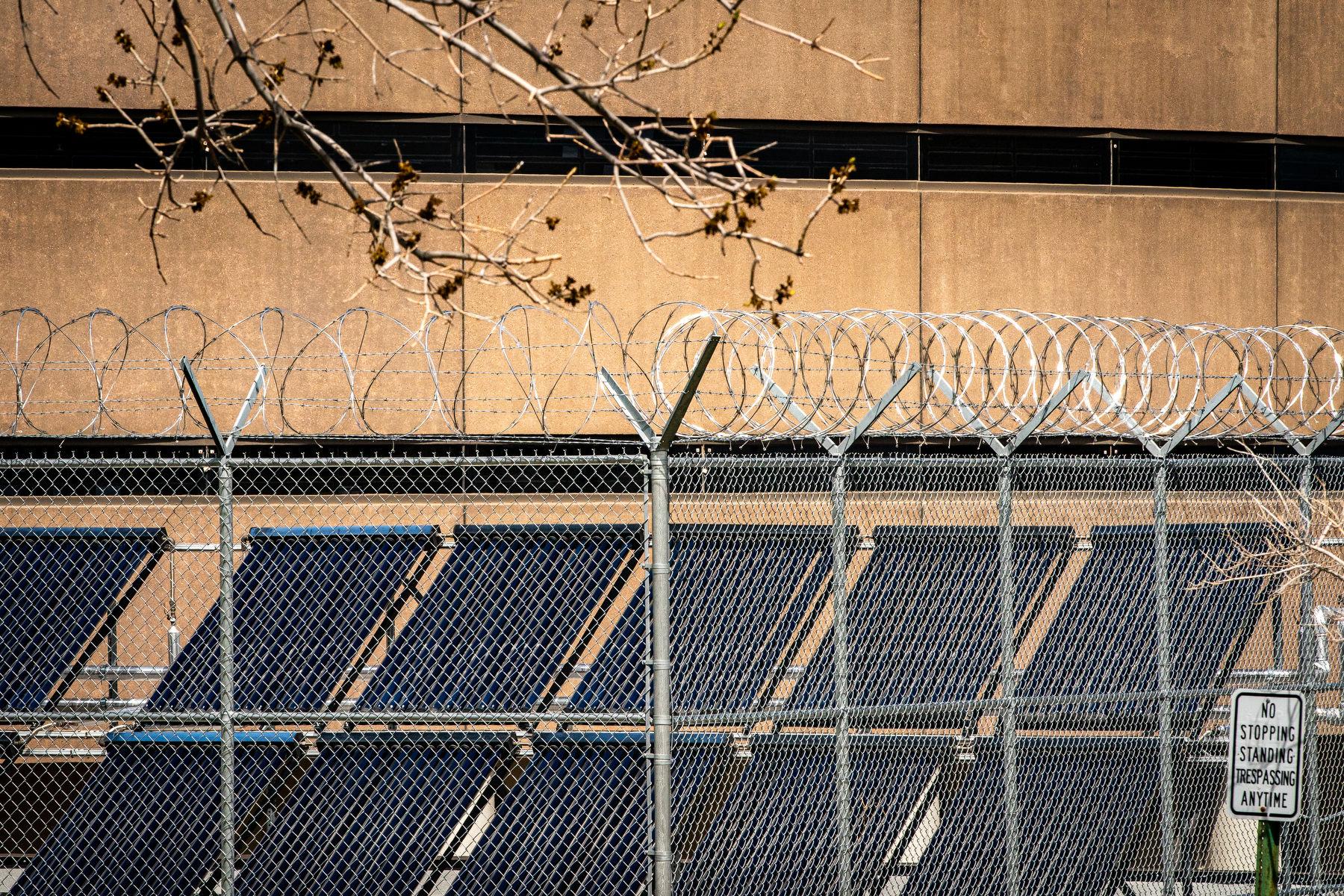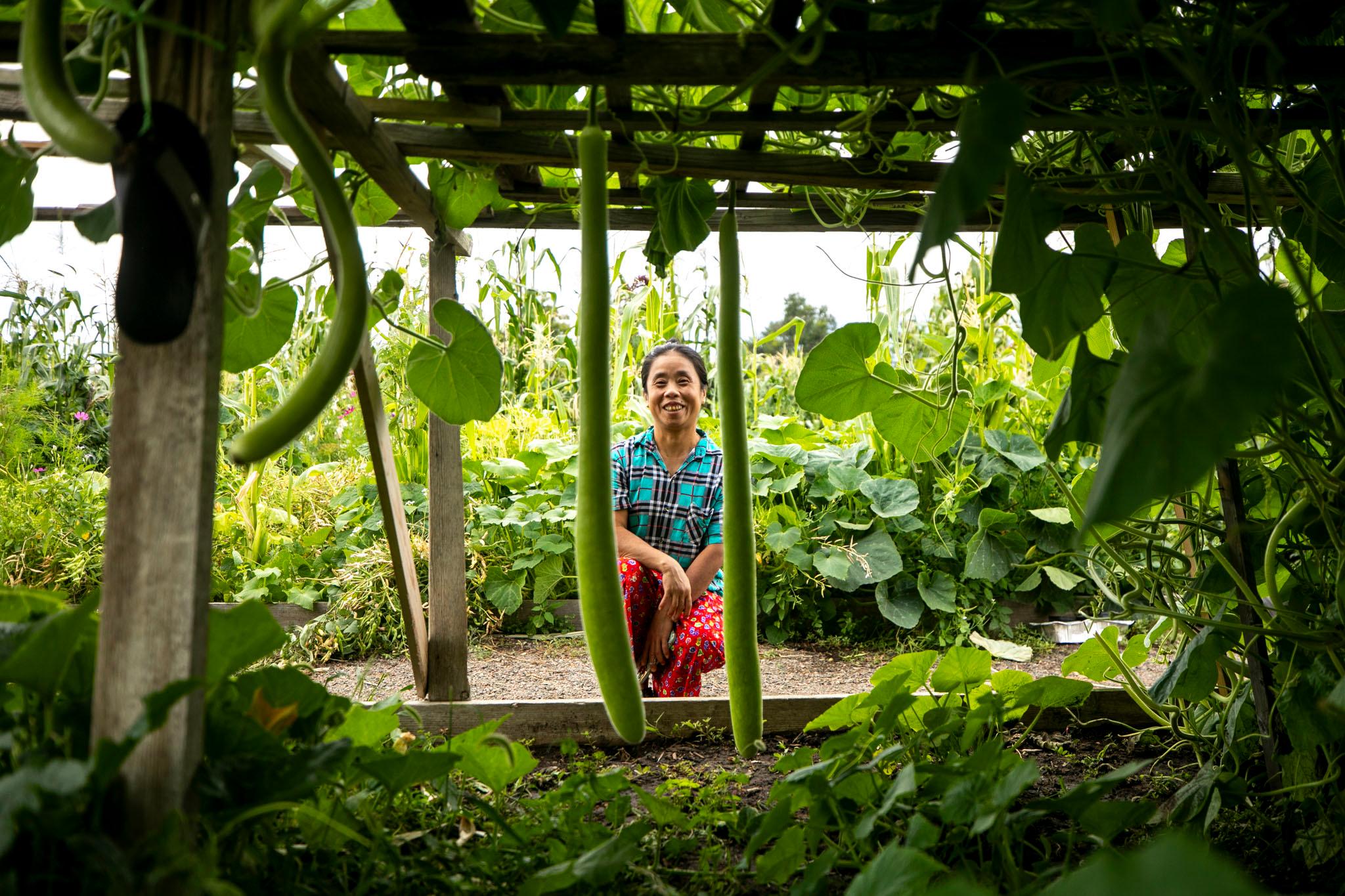
In a noisy, bustling part of Aurora, where sounds of sirens and traffic pierce the air, there’s a small, quiet oasis of peace: a garden off Colfax Avenue, and it is growing with more than just vegetables.
The community garden behind Aurora’s Mental Health and Recovery Cultural Development and Wellness Center's Asian Pacific Clinic, near the Denver/Aurora line is one of about 200 community gardens in the Denver metro area, where people can rent a plot to farm from Denver Urban Gardens, a non-profit organization.
About three dozen people come regularly to tend to their garden plots, where they grow everything from red okra to three-foot-long squash. Some of what’s pushing up from the earth are everyday string beans and corn, but some of the food is more popular in other parts of the world.
Last year, Urban Gardens launched the Culturally Inclusive Seeds Program, making available 64 varieties of seeds people can grow that model crops more like what they were used to eating before coming to the US. According to its website, “The Culturally Inclusive Seeds Program is designed to support community members with marginalized identities in DUG gardens by providing access to rare and specialty plant varieties selected with an emphasis on cultural inclusivity.”
And it seems to be working.
“The pumpkin, the spinach, the corn ... these are the things we grew up eating, and we are happy to have them here,” said Prem Tamang, a community gardener – one of about three dozen at that site – and volunteer garden leader, originally from Bhutan. He was speaking through an interpreter during a recent tour of the garden, where sounds of birds competed with honking horns and a siren from nearby busy Colfax Avenue.
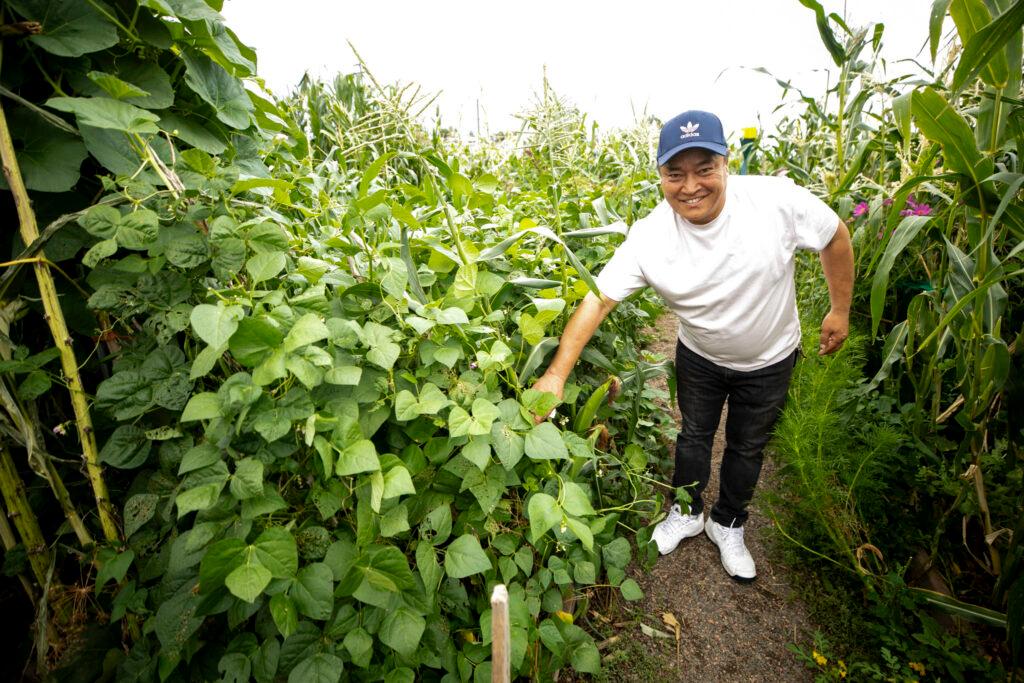
Showing a visitor around the green space that had tall corn stalks and tree branches doubling as vines, he pointed to the garden. “Some of the things I had recently harvested – green spinach, mustard greens, and I had cauliflower, tomatoes, and I recently planted some corn as well, I had some space.”
DUG Executive Director Linda Appel Lipsius said about 200 community gardens are in bloom across seven counties in the Denver metro area, each with between 5 and 150 plots, and each run by a volunteer garden leader like Prem. Last year, the organization started making available to gardeners for free the hard-to-find vegetable seeds that people from around the world were used to, before coming to the US.
“That came about because there’s about 40 languages that are spoken in the Denver Urban Gardens network. We realized seeds from people’s homes were not commercially available,” Appel Lipsius said. DUG did an audit of its network, asking what they’d like to grow but couldn’t locate seeds for. “Based on that, we put together a catalog,” she said. “We are in year two.”
The seeds catalog has pictures of the 64 seed choices, in five different languages. There’s hummingbird mint, African amaranth, Adzuki beans, Chinese broccoli, bitter melon, blue corn, Taiwanese long eggplant, hairy melon, purple tomatillo and dozens of other choices; people can acquire them for free by filling out an order form in the catalog or contacting a DUG office, Lispius said.
“This gives us an opportunity to highlight how close food is to our spirit, your ancestry – food is in your history; it’s sort of ingrained,” she added. “And in most cultures, even the previous generations, people grew their own food, so it’s an opportunity to reconnect, where the elders can teach the kids, and everyone is learning from each other.”
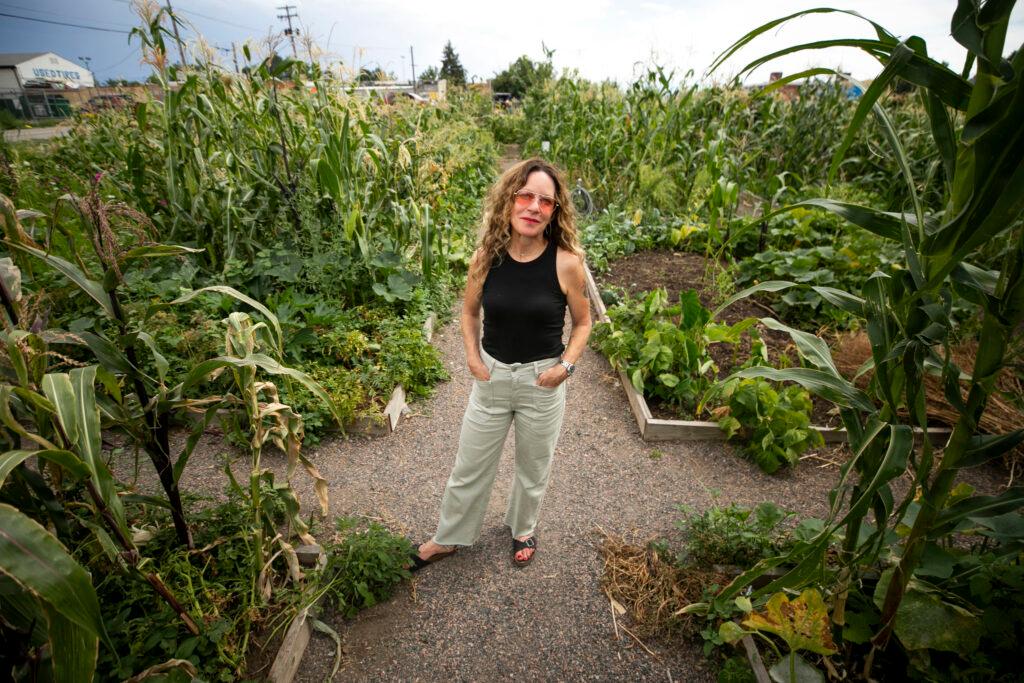
The garden is not just about growing vegetables, but also healing and feeling part of a community. On Saturday, the gardeners will have a potluck meal. The plan: gardeners will prepare a dish made from what they’ve grown in their garden and serve it to their fellow community gardeners, on tables set up among the stalks, leaves and branches of growing veggies.
The garden functions in yet another way: located just a few feet from the Asian Pacific Clinic, psychologists and social workers holding clinic hours step out of their offices and use the garden as both a setting – and a hands-on activity – for counseling sessions.
The counseling offered there targets the population of its immediate surroundings. It is in a part of Aurora where some residents are from countries including Nepal, Myanmar and Bhutan. Some clients, according to the staff, arrived in the US as refugees, after experiences that left them traumatized, far away from loved ones, learning to communicate in a country where their language is non-dominant and often not initially able to find work.
Monica Gerber, a clinic psychologist, said that stress can be lessened through gardening. She co-authored a study, Nepali Bhutanese Refugees Reap Support Through Community Gardening, published in 2016 by the University of North Texas.
“Gardening provided opportunities to develop new supportive networks, learn how to access practical services, and engage others through mutually valued activities,” it states. “These findings have important implications given extant literature on the toll social isolation can take on mental health and wellbeing, particularly among individuals from heavily communal societies.”
She said the study reflects what she’s noticed among clients at the clinic: “We meet people who come to the US and cannot find a traditional job, and they sink into depression.”
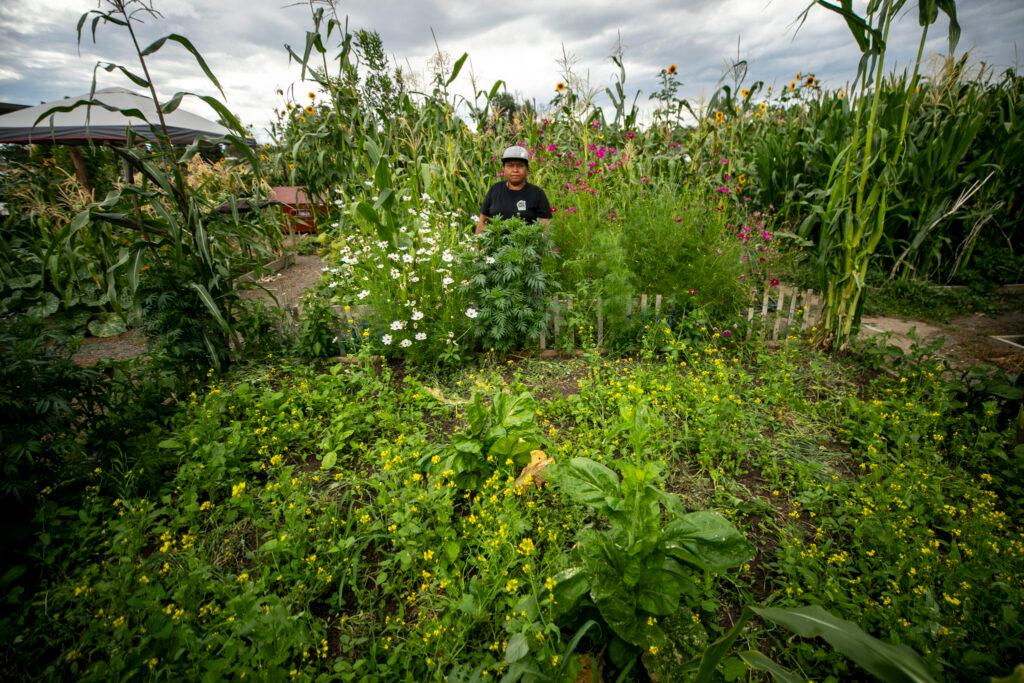
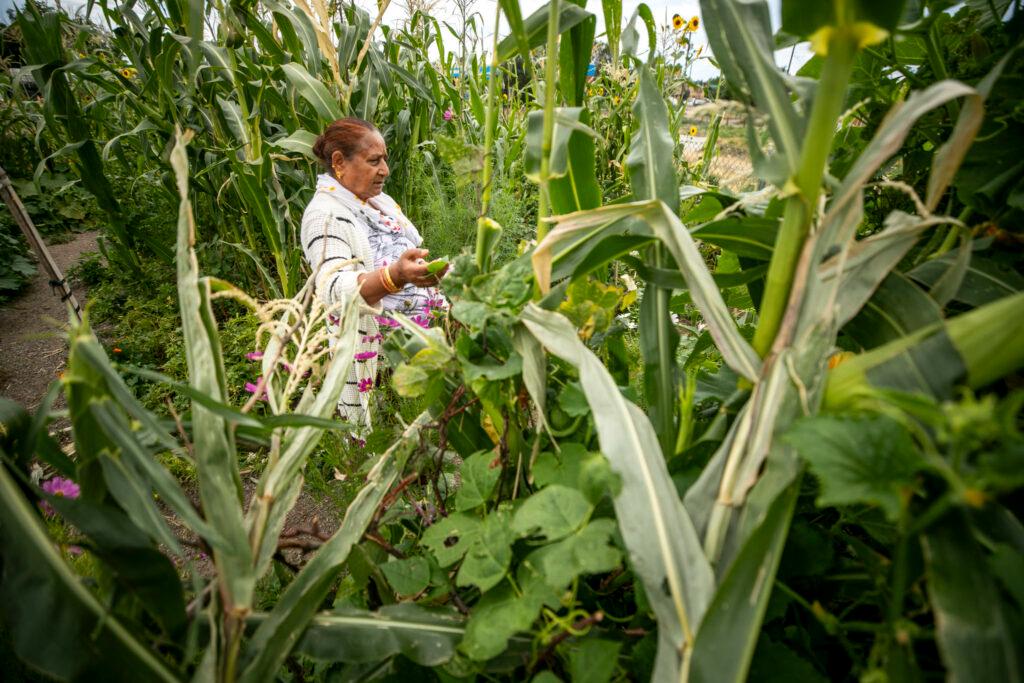
One way many people, regardless of country of origin or refugee status, maintain positive self-esteem is through contributing to something – an opportunity that might have been regular before coming to the US and which can be duplicated in the garden, where some of the gardeners bring home what they grow, providing produce the family might not otherwise have, she said.
“Before, they were preparing things, providing, so it’s that role of being able to provide for their family ...”
Being outside on a sunny day, during a recent visit, gardeners seemed distracted from whatever might be going on for them outside the garden, as they worked, conversed, and chatted about bottle gourd recipes.
“Doesn’t it feel great to walk around?” Gerber said during the outdoor visit. “It’s a boost for every human, to walk around in a space like that.”
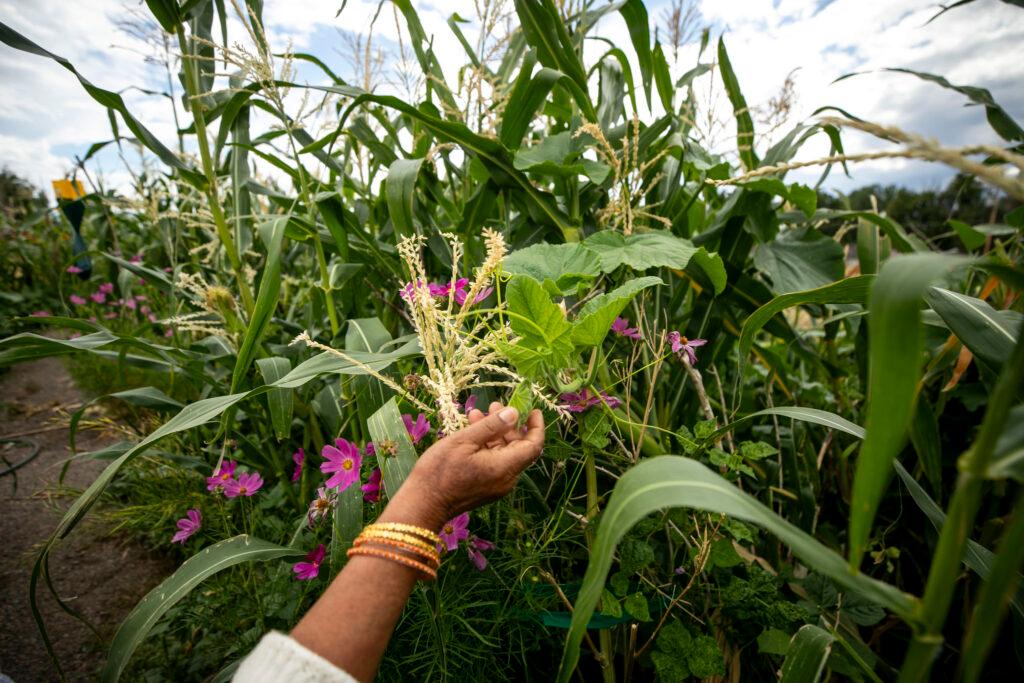
Clinic social worker Alex Harrison said that clients aren’t used to talk therapy as a way to manage depression anyway.
“We focus on the inside in the Western approach: ‘What are the emotions you’re feeling; Can we talk about it?’” he said.
“When we work with people from other cultures, it’s a more somatic experience, working with your body, working with your hands in the ground,” he said.
And that means more motion than discussion, he added: “In other cultures, if you are struggling with your mental health, you engage in tai chi, you do yoga. If you can go outside and be active with your therapist, that’s bridging the culture, that’s therapeutic.”
The experience during a recent visit was active and full of motion outside for Prem, a 56-year-old refugee from Dagana, Bhutan. His garden, like the others, appeared about six feet square, cordoned off with wooden planks, with dark rich brown soil almost fully covered with different plants.
“Look here: I’m going to show you some of the other produce that are growing now,” he told visitors.
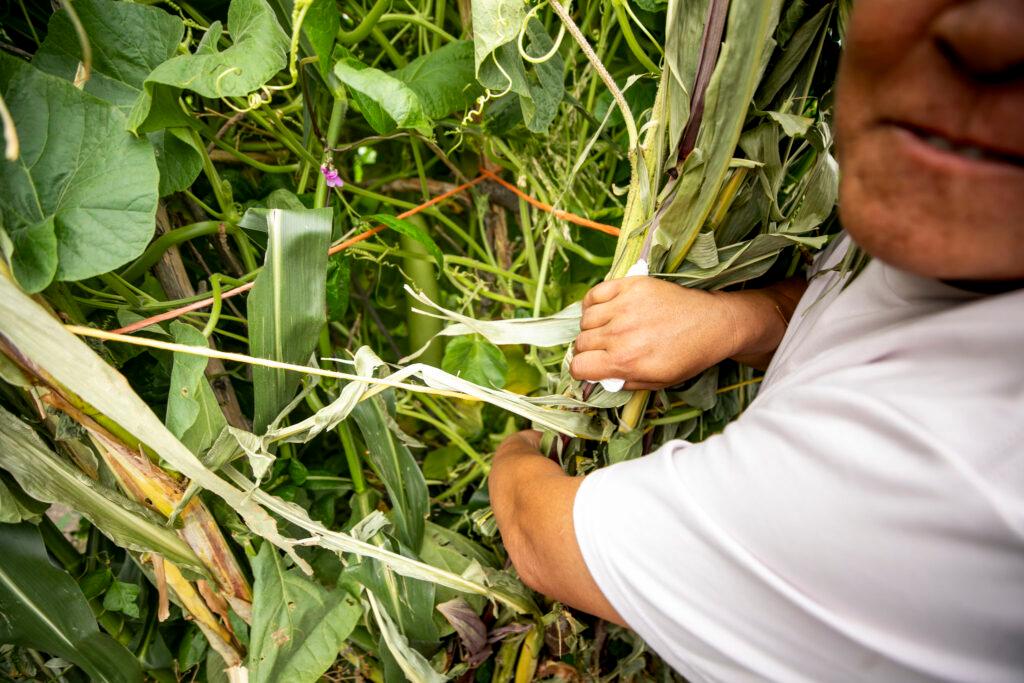
Among his current crops was bottle gourd – also called bottle melon – three- to four-foot long, skinny green tubes that blend into their own leaves. When asked how the bottle gourds were prepared for meals, he said through the interpreter: “We cook them like other curries, chop them in bite-size pieces, put cumin seeds, then you put that bottle gourd, chopped, and put some chopped potatoes, other seasonings based on your taste, turmeric and such, add some water for sauce. It’s good to eat with rice or roti.”
Other gardeners tend to look to Prem for tips.
“Each plant requires different techniques,” he said. “I help gardeners starting from the soil preparation. Soil has to be mixed with compost – some require to go deep into it, some don’t require that much depth; then it’s about watering them. I teach them some soil preparation, as well as how they can make mulch after they harvest their produce.”
Some vegetable community gardeners were growing have the same name as vegetables at the local store – pepper, eggplant, okra, for example – but look different from what Colorado vegetable consumers might be used to. Some okra were red; radishes were carrot-shaped; tomatillos were purple; and herbs like Thai basil had a distinctly different aroma that stuck to the fingertips.
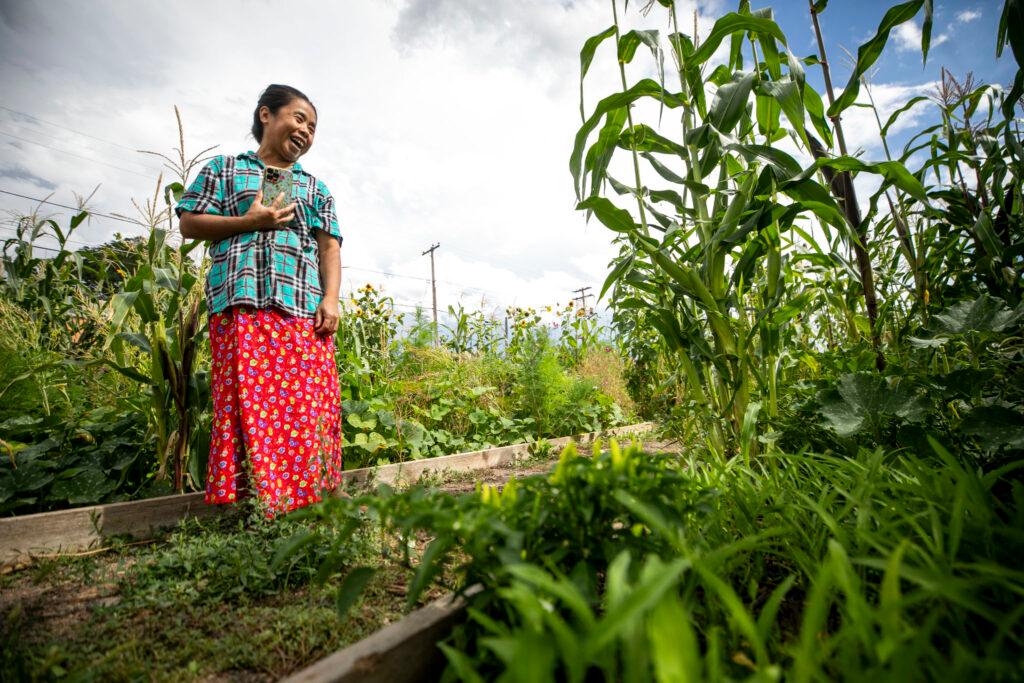
It seemed the bottle gourds were commonplace there, as they were also being grown by Anmi Wan, 46, a community gardener who was born in Hpa-An, Myanmar. She was tending her plot halfway across the garden from Prem’s. Hidden among mint, basil, and branches were her own green bottle gourds, but her crops weren’t as mature as Prem’s.
When asked by an incredulous reporter, accompanied by an equally surprised audio engineer, whether the long green tubes dangling three feet from their stalks were vegetables, she said yes through an interpreter. For her, bottle gourds were part of her everyday life for her before coming here, she said. “We cook with chicken or we cook with shrimp; we boil it and eat it like that,” she said.
When asked if they were ready to pick at the size, about as long as her arm, she glanced at it and then said, “Almost ready.”
And before leaving, she shared a bunch of mint and other herbs, smiling and bowing to communicate across languages – evidence of the community-building the garden is meant to create.
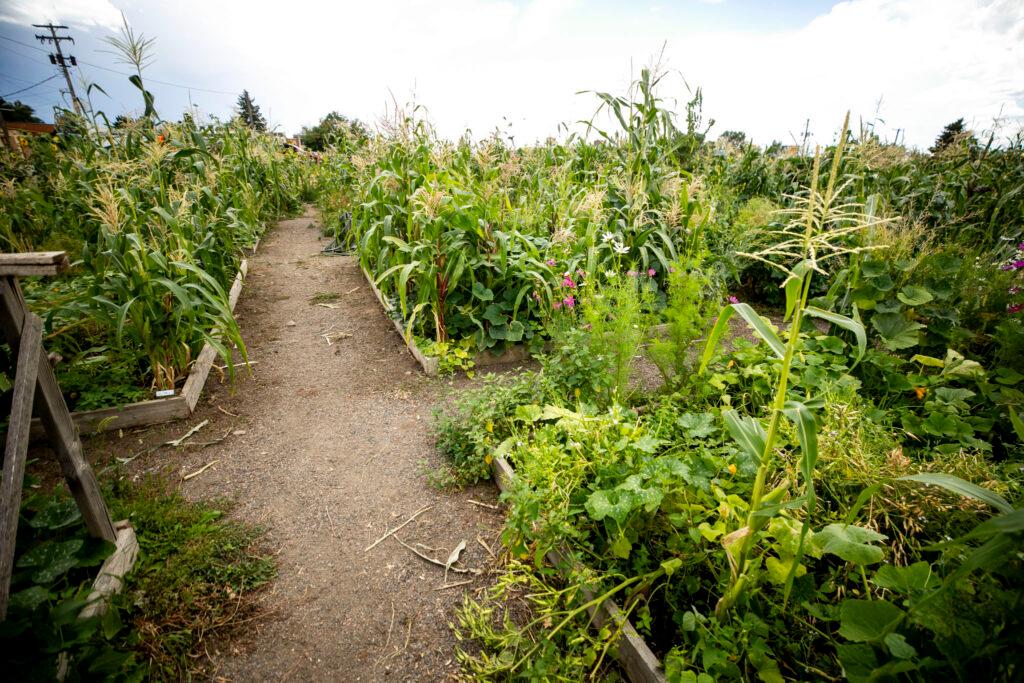
Editor’s note: Linda Appel Lipsius is a member of the Colorado Public Radio board of directors. She had no editorial input in this story.





